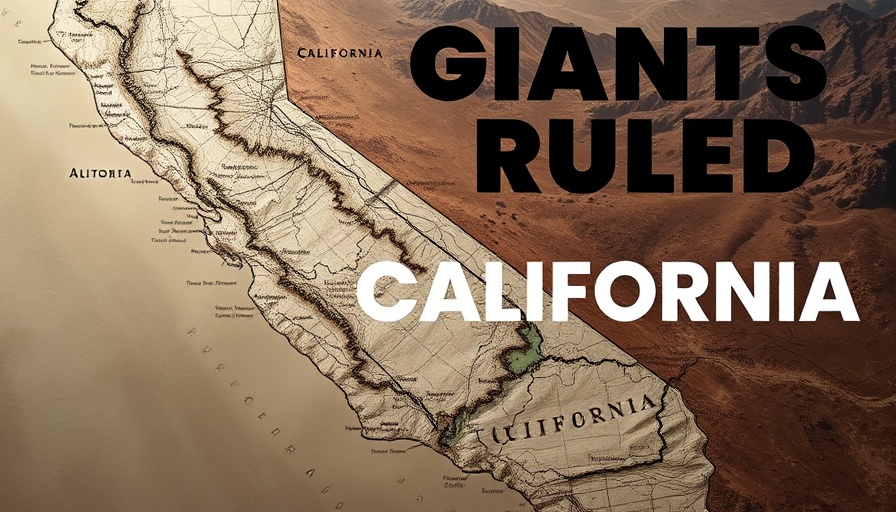
Unearthing the Secrets of California's Ice Age
Hidden beneath California's scenic landscapes and bustling urban life lies a forgotten world, one that flourished over 20,000 years ago during the Ice Age. This ancient California, marked by cooler temperatures, lower sea levels, and an abundance of wildlife, paints a striking contrast to the present. During the *Last Glacial Maximum*, the state's intriguing coastlines were dramatically altered, providing a rich tapestry of ecosystems teaming with colossal creatures from mammoths to saber-toothed cats.
In 'The Ice Age Secrets Hiding Beneath California', the discussion dives into the forgotten ecosystems of the Ice Age, exploring key insights that sparked deeper analysis on our end.
From Giants to Geography: How Ice Age California Shaped Today’s Landscape
To comprehend the Ice Age's legacy in California, we must rewind to a time when sea levels were approximately 300 feet lower, revealing a now-missing land mass known as Santa Ros, which comprised several modern Channel Islands. This unique island allowed mammals like the Colombian mammoth to thrive before evolving into the pygmy mammoth. Such adaptations reveal ancient survival strategies amidst a drastically different environment.
The Mystery of Location: Ice Age Artifacts Still Near Us
California's prehistory is not solely confined to remote, untouched landscapes; astonishing evidence of Ice Age life has resurfaced amid urban development. For instance, the La Brea Tar Pits in Los Angeles have been pivotal in unraveling ancient mysteries. Discovered in the early 20th century, these pits have yielded thousands of fossils from a variety of species, including iconic predators like saber-toothed cats and dire wolves. Such ongoing excavations remind us that history is often lurking beneath our feet, waiting to surface at accessible sites.
Human Interaction with Ice Age Fauna
Archaeological evidence suggests that humans played a role during this period, navigating California's interior by tracking game along the shores of ancient lakes and rivers. As these early inhabitants encountered the megafauna, they adapted their hunting techniques, evidenced by cut marks found on ancient bison bones, which hint at cultural practices and survival stories that resonate with the modern-day indigenous populations.
The Extinction Enigma: Climate, Humans, or Both?
The gradual extinction of megafauna, such as mammoths and saber-toothed cats, has sparked debates among scientists. The prevailing theory today posits that both climate change and human activity contributed to this rapid die-off. Evidence indicates that while environmental shifts were transforming habitats, the rise of human hunting practices intensified pressure on these already vulnerable species, leading to their swift extinction.
Lessons from the Past: What the Ice Age Puzzles Can Teach Us
The Ice Age legacy serves as a sobering reminder of resilience and adaptation amidst vast ecological changes. California today, under the increasing threat of climate change, can learn from this history. Just as the state adapted post-Ice Age, modern inhabitants must find new ways to cope with changing environments, echoing the survival instincts of early Californians.
Conclusion: A Journey Below the Surface
As we continue to explore California’s past, the stories embedded deep within our landscapes hold profound significance for understanding not only our history but also our future. The remnants of the Ice Age are not merely relics for display; they remind us that extinction is not just a concept for the distant past, but a call to action in our present. Whether through museum exhibits or ongoing construction that unveils these ancient bones, we are prompted to remain curious about the world beneath our feet and rethink our relationship with nature.
 Add Row
Add Row  Add
Add 




Write A Comment